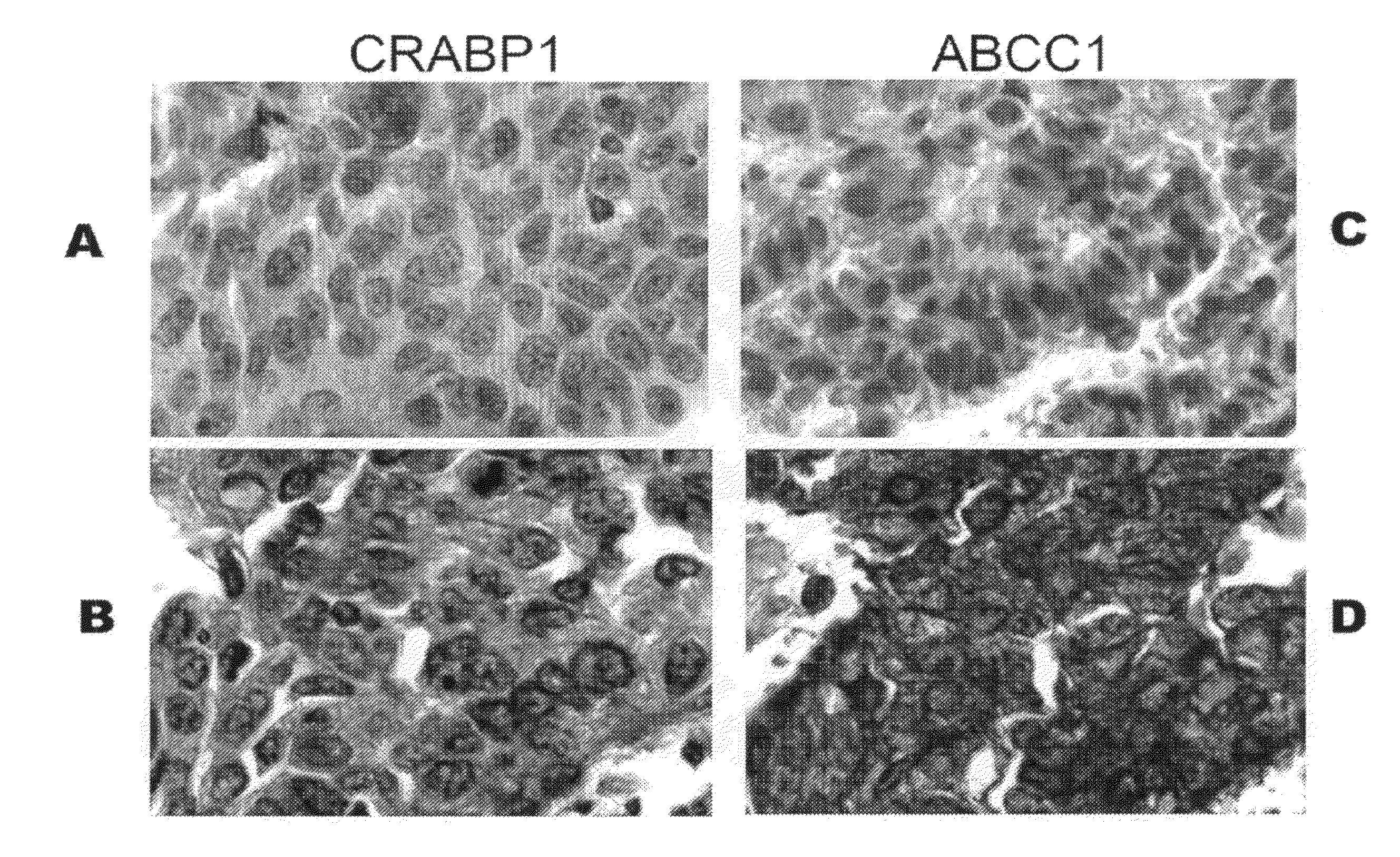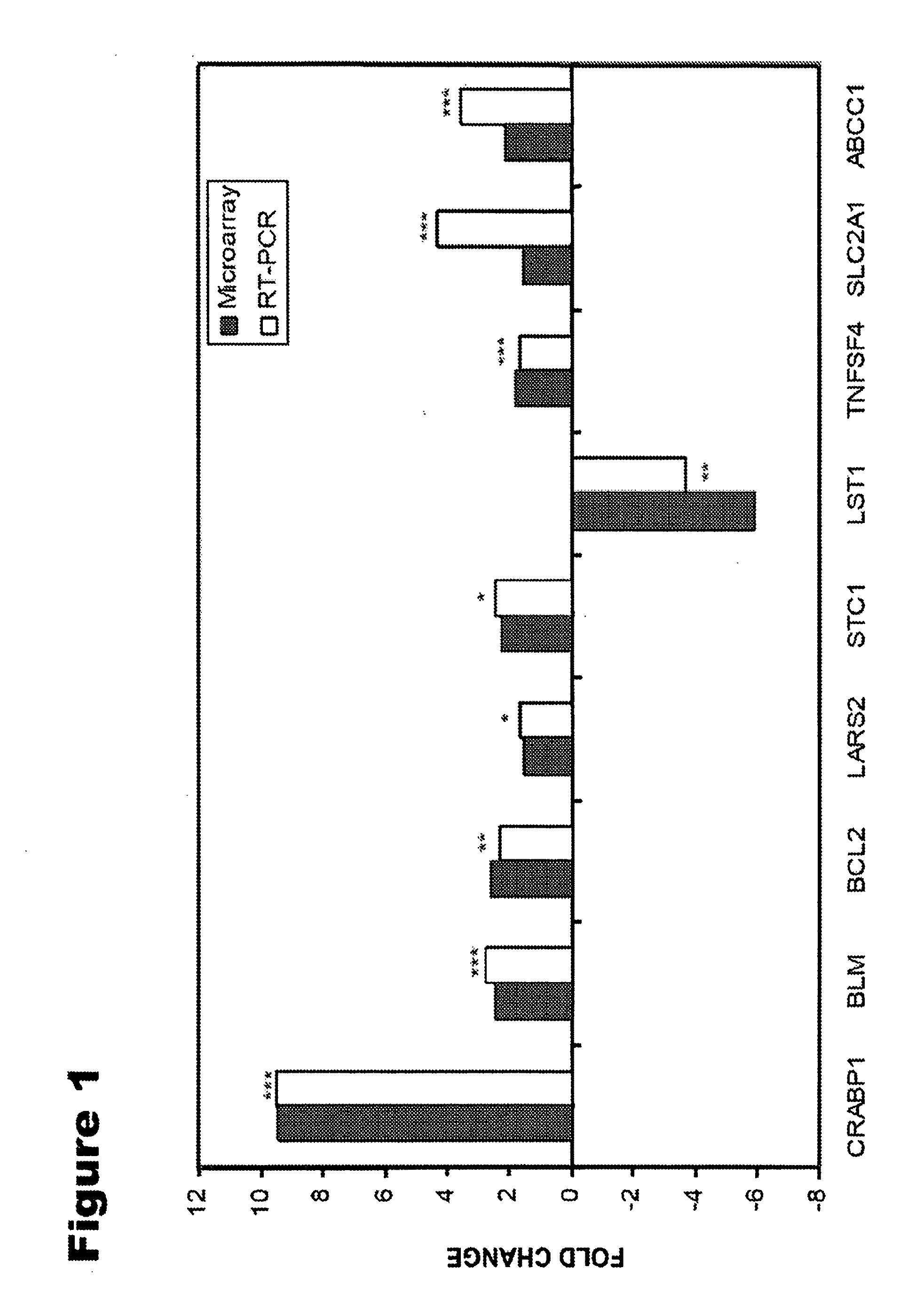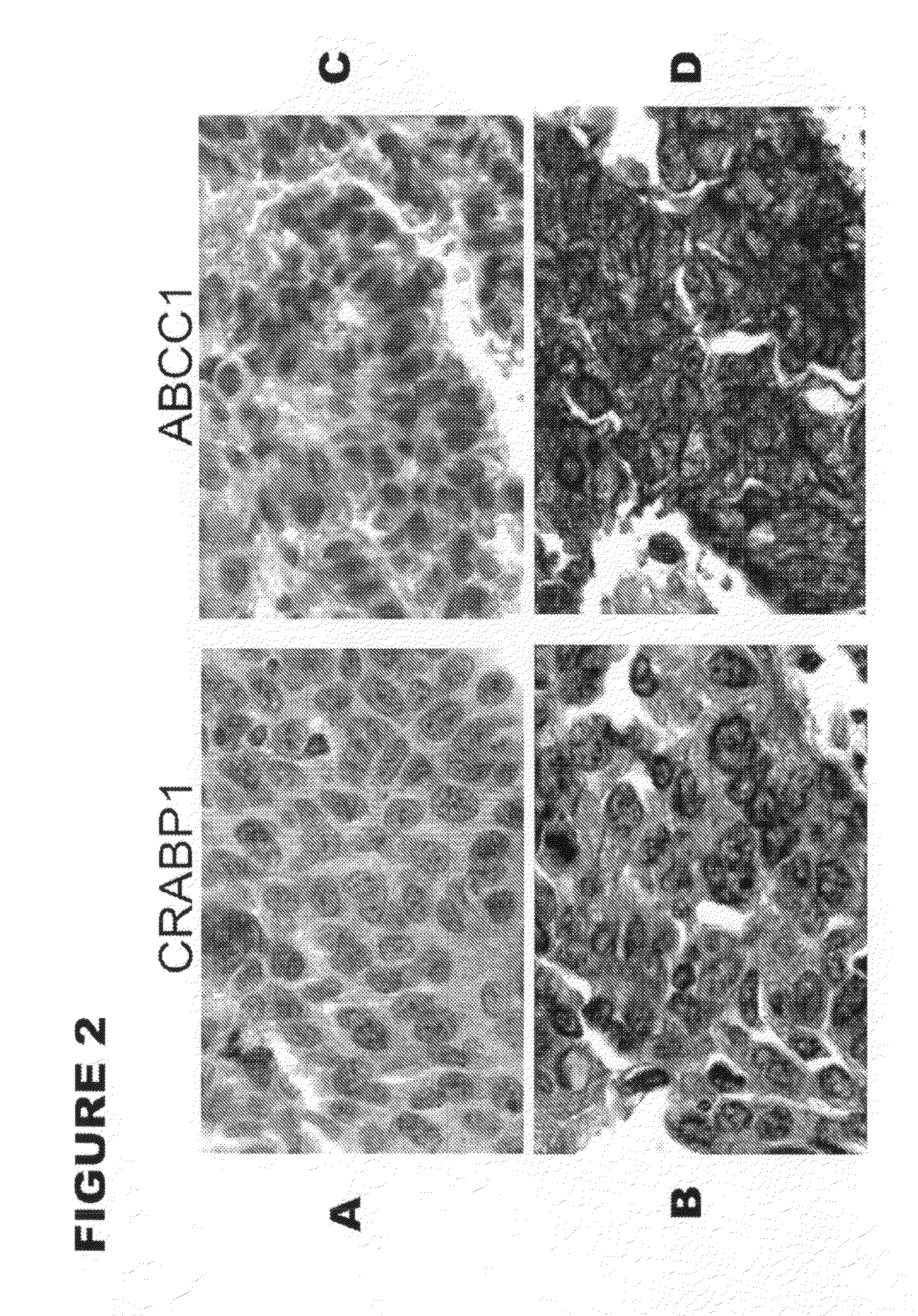Predicting lung cancer survival using gene expression
a gene expression and lung cancer technology, applied in the field of multi-functional biomarkers for predicting survival, can solve the problems of high mortality and no reliable clinical or molecular predictors for identifying high-risk patients, and achieve the effect of long survival time and short survival tim
- Summary
- Abstract
- Description
- Claims
- Application Information
AI Technical Summary
Benefits of technology
Problems solved by technology
Method used
Image
Examples
example 1
Identification of Lung Cancer-Survival Related Genes
[0064]There have been several studies using microarray technology that were performed to determine genetic profiles predictive of cancer survival in NSCLC to develop nonpathological methods for stratifying risk (Beer et al., 2002, Nat Med 8:816-824; Sun et al., 2004, Mol Cancer 3:35; Wigle et al., 2002 Cancer Res 62:3005-3008; Borczuk et al., 2004, Am J Respir Grit Care Med 170:167-174). However, the survival-related genes identified in these studies lacked similarities due to limited patient samples, disease heterogeneity and some technical factors such as different microarray platforms and specimen processing. In this study, a meta-analysis of five data sets was conducted to search for differentially expressed genes related to survival time (less than 2 years and greater than 5 years).
[0065]Samples from Washington University in St. Louis. Thirty-six patients who underwent resection of stage 1B NSCLC at Washington University Schoo...
example 2
Validation of Gene Expression Profiling Using QRT-PCR
[0076]To validate the microarray gene expression results from the meta-analysis, the relative expression of nine randomly selected genes associated with overall survival were determined by QRT-PCR analysis using the samples from dataset 1. The nine genes selected for analysis were CRABP1, BLM, ABCC1, SLC2A1, TNFSF4, BCL2, LST1, STC1 and LARS2. Primers for QRT-PCR (Table 3) were designed using Primer Express software version 2.0 (Applied Biosystems, Foster City, Calif.). Amplification of each target DNA was performed with SYBR Green master mix in BIO-RAD Single Color Real-Time PCR Detection system according to the protocols provided. The control gene β-actin and target genes were amplified with equal efficiencies. The method for assessing if two amplicons have the same efficiency is to look at how ACT (CT,target−CT,β-actin, CT is cycle number at which the fluorescence signal exceeds background) varies with template dilution. The fo...
example 3
Validation of Gene Expression Profiling Using Tissue Microarray
[0078]To determine if increased mRNA levels were correlated with increased protein expression in lung adenocarcinomas from the short-term survival patients, immunohistochemical staining was performed. Lung tissues of 60 stage I NSCLC patients (including 12 patients who survived less than 2 years after surgical resection and 48 who survived for more than 5 years after surgery) were collected during surgery between 1985 and 1999 at the Arthur James Cancer Hospital of the Ohio State University Medical School (OSU; Columbus, Ohio). All tissues were fixed in formalin, and embedded in paraffin. A patient tissue microarray (TMA) was constructed from these tissues for examination of CRABP1 and ABCC1 immunoreactivity in short-term and long-term survival patients. The antigens were retrieved in a vegetable steamer with Dako's TRS, pH 6.1 and antibody staining was performed on the Dako autostainer. Arrays were incubated with antibo...
PUM
| Property | Measurement | Unit |
|---|---|---|
| survival time | aaaaa | aaaaa |
| survival time | aaaaa | aaaaa |
| thick | aaaaa | aaaaa |
Abstract
Description
Claims
Application Information
 Login to View More
Login to View More - R&D
- Intellectual Property
- Life Sciences
- Materials
- Tech Scout
- Unparalleled Data Quality
- Higher Quality Content
- 60% Fewer Hallucinations
Browse by: Latest US Patents, China's latest patents, Technical Efficacy Thesaurus, Application Domain, Technology Topic, Popular Technical Reports.
© 2025 PatSnap. All rights reserved.Legal|Privacy policy|Modern Slavery Act Transparency Statement|Sitemap|About US| Contact US: help@patsnap.com



